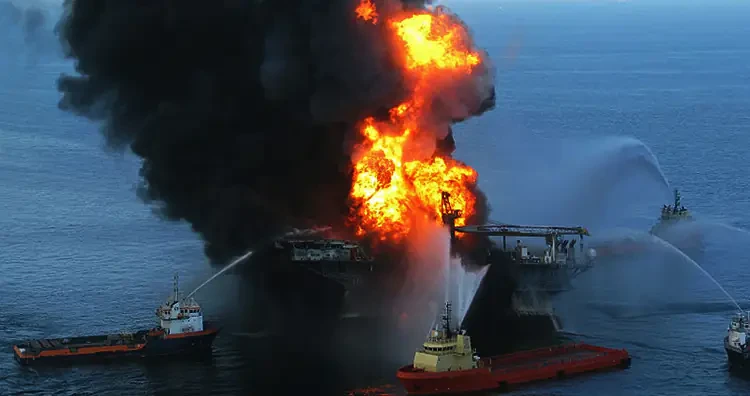In the annals of history, there exist stark reminders of humanity's fallibility, instances where miscalculations and miscommunications have led to catastrophic consequences. This essay delves into ten such instances, each bearing testimony to the grave repercussions of human error.
Deepwater Horizon Oil Spill (2010):
The Deepwater Horizon oil spill in the Gulf of Mexico stands as a harrowing testament to human error and its environmental toll. Resulting from poor well planning, the spill claimed 11 lives and inflicted irreparable damage to marine ecosystems, underscoring the dire consequences of negligence.

SS Sultana Steamboat Explosion (1865):
The SS Sultana disaster near Memphis, Tennessee, epitomizes the catastrophic outcome of disregarding safety protocols. Overloading and boiler leaks culminated in an explosion, claiming an estimated 1,500-1,800 lives, serving as a somber reminder of the importance of diligence in maritime operations.

Johnstown Flood (1889):
The Johnstown Flood of 1889 serves as a stark reminder of the perils of inadequate infrastructure maintenance. Caused by the failure of the poorly maintained South Fork Dam, exacerbated by heavy rainfall, the deluge claimed 2,209 lives and wrought extensive devastation upon the town of Johnstown, underscoring the paramount importance of robust infrastructure.

Collapse of the Quebec Bridge (1907, 1916):
The collapse of the Quebec Bridge not once, but twice, underscores the grave consequences of engineering oversights. Despite purported lessons learned, design flaws led to catastrophic failures in 1907 and 1916, resulting in substantial loss of life and resources, highlighting the imperative of meticulous engineering practices.

Hindenburg Disaster (1937):
The Hindenburg disaster stands as a poignant reminder of the dangers of technological hubris. Ignition of hydrogen gas, due to inadequate safety measures, resulted in a catastrophic inferno, shattering public confidence in airship travel and emphasizing the imperative of prioritizing safety over innovation.

Tacoma Narrows Bridge Collapse (1940):
The collapse of the Tacoma Narrows Bridge serves as a cautionary tale against compromising structural integrity for aesthetic appeal. Despite its iconic design, insufficient structural support rendered the bridge vulnerable to winds, culminating in its dramatic collapse, highlighting the importance of prioritizing functionality over form.

Skylab Re-entry (1979):
The uncontrolled re-entry of Skylab serves as a sobering reminder of the consequences of lax oversight in space exploration. NASA's failure to mitigate orbital decay led to Skylab's uncontrolled descent, endangering lives and property, underscoring the need for stringent safety protocols in aerospace endeavors.

Hyatt Regency Walkway Collapse (1981):
The Hyatt Regency walkway collapse epitomizes the human cost of design flaws and negligence in construction. Inadequate structural reinforcement resulted in a catastrophic collapse, claiming numerous lives and prompting a reevaluation of safety standards in architectural engineering.

In retrospect, these calamities serve as poignant reminders of humanity's fallibility and the imperative of learning from past mistakes. Through rigorous adherence to safety protocols, meticulous planning, and effective communication, we can endeavor to mitigate the risk of similar catastrophes in the future, ensuring a safer and more resilient world for generations to come.



